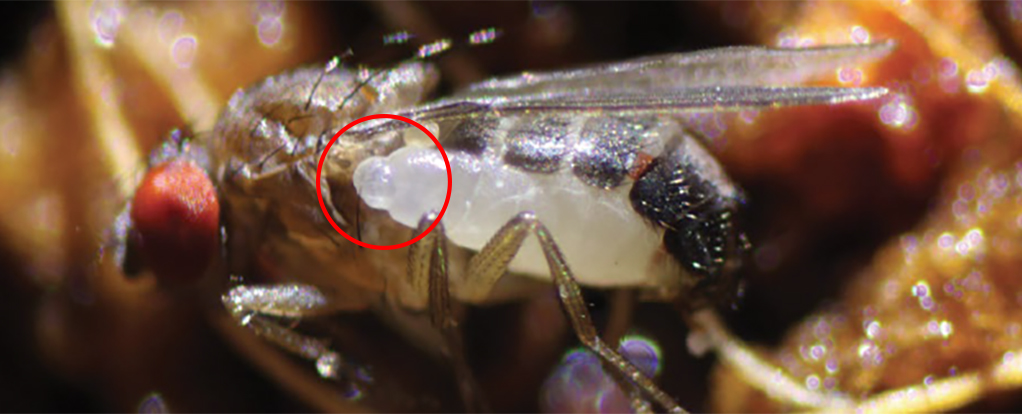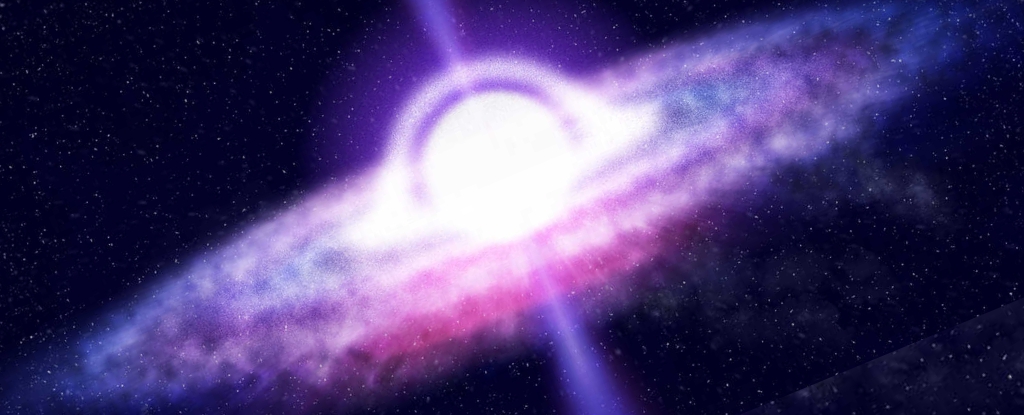A team of biologists has stumbled across a new species of wasp in an unlikely place: the back end of an adult fruit fly.
The wasp is a previously undescribed species the researchers named Syntretus perlmani. And the strangest thing about it? It begins its life in the abdomen of adult Drosophila flies, a place that, as far as we know, no other wasps are willing to go.
Though parasitoid wasps lay their young in the bodies of all kinds of insects, up to 200 species select the juvenile, larval form of Drosophila as their hosts.
Some wasps in the Euphorinae subfamily – of which this newest discovery is a part – have been known to attack adults from orders of beetle, wasp, bee and lacewing, but these wasps have never before been seen growing inside a grown fruit fly.
The team’s first hint of this unusual grub-crib came back in March 2023, while they were catching flies using backyard traps in Mississippi. They were looking for nematode infections, but they found something arguably more interesting.
There, nestled cozily in the fleshy abdomen of an adult male fruit fly, was a parasitoid wasp larvae. Mitochondrial DNA sequencing revealed it was a species of Syntretus that had yet to be described.
For the next 11 months, the team collected and screened more than 6,000 male flies (Drosophila affinis) from across Mississippi, Alabama, and North Carolina, inspecting them closely for signs of the wasp larva.
Fewer than 1 percent of these flies were infected throughout the entire collection year, though this varied throughout the year from 0.5 to 3 percent.
They inspected females too, but among all 477 of them, only one had a wasp larva wriggling within.
Having collected all these offspring, the researchers decided to rear them to observe their development and behavior in the lab.
They found it takes about 18 days after the egg is deposited for a larva to develop, during which time the host fly remains active.
Leading up to the special day, the larva begins to writhe and squirm inside the fly, eventually chewing its way through its host’s abdomen, chestburster-style, before wriggling away to a safe place where it can pupate and emerge in all its adult wasp glory.
If you think it sounds exhausting being a host fly, try being a female wasp! Within just 24 hours of emerging from their lab cocoons, female wasps were ovipositing into flies, beginning the cycle all over again.
frameborder=”0″ allow=”accelerometer; autoplay; clipboard-write; encrypted-media; gyroscope; picture-in-picture; web-share” referrerpolicy=”strict-origin-when-cross-origin” allowfullscreen>
Selecting an adult host to incubate your growing grubs can offer unique advantages, since there’s less competition with other parasites for an adult host, and these hosts can have less potent cellular immune responses than juveniles.
“This wasp can be easily collected from backyard fly baits and has a broad geographic distribution throughout the eastern USA,” the researchers write, noting this could make the species an ideal study tool for biologists.
“Parasitoid research continues to uncover unusual biology and supports fundamental mechanistic insights into immunity, metabolism, ecology, evolution and behavior,” they write.
The wasp attacked other kinds of fruit flies in the lab, too, including Drosophila melanogaster, whose rapid life cycle, reproductive vigor and simple, giant chromosomes have made it one of the most widely used and genetically-understood organisms on Earth.
Nine adult wasps were successfully reared from the 44 confirmed infections of female D. melanogaster in the lab.
“We anticipate that this wasp’s association with the laboratory model organism, D. melanogaster, will provide new research opportunities across the life sciences,” the team writes.
This research is published in Nature.





